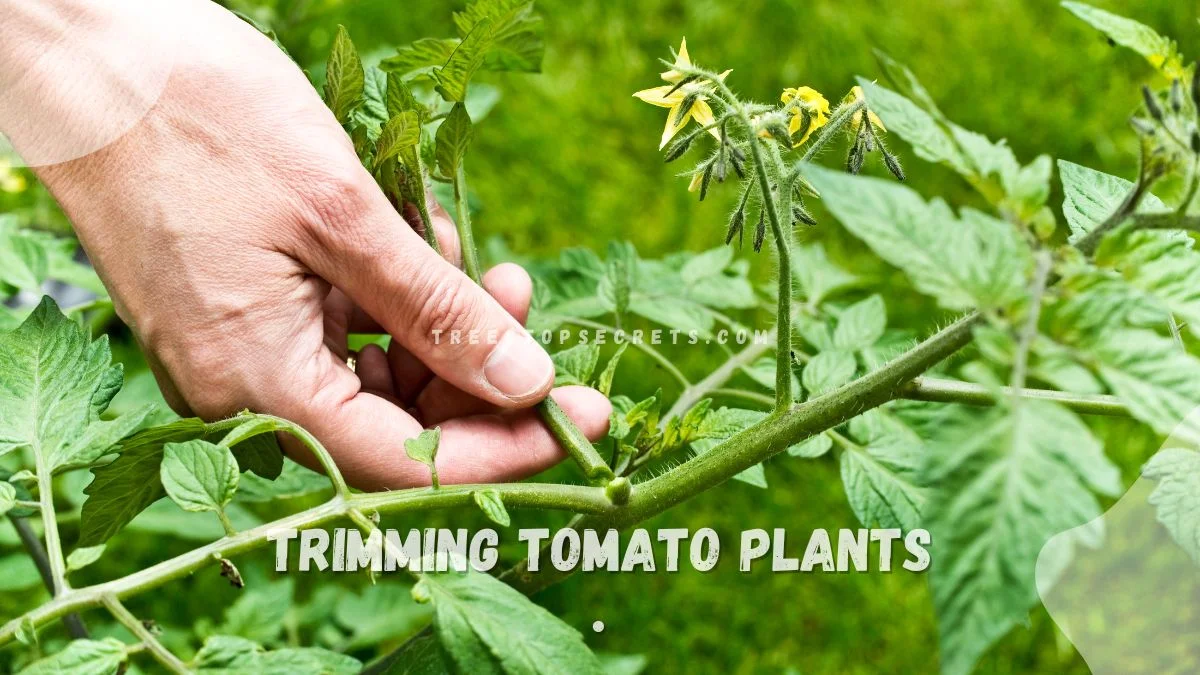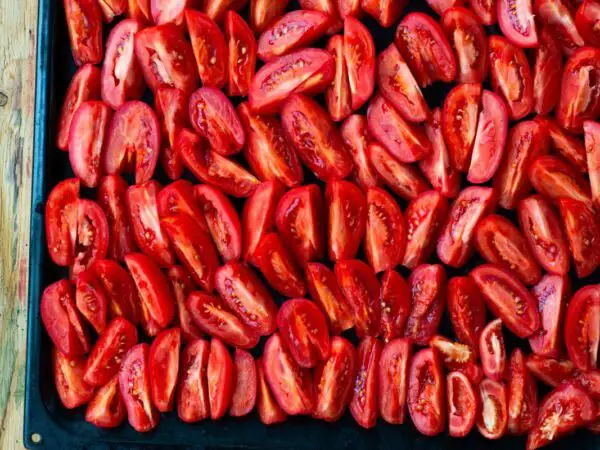Did you know that proper trimming of tomato plants can increase your yield by up to 20%? Trimming may seem daunting, but with the right techniques, it can significantly improve the health and productivity of your tomato plants. In this guide, we will explore the benefits of trimming determinate tomatoes, when and how to prune your tomato plants, and common mistakes to avoid. Whether you're a seasoned gardener or just starting out, mastering the art of pruning tomato plants can lead to a bountiful harvest that you can enjoy all season long.
Key Takeaways
- Regularly pruning tomato plants is essential for promoting healthy growth and maximizing fruit production.
- Different types of tomatoes, including determinate plants and successive plants, require specific pruning techniques to ensure optimal development.
- Pruning at planting time sets the foundation for a strong and fruitful tomato plant.
- Early to mid-season pruning helps maintain plant health, improve air circulation, and increase sunlight exposure to the fruits.
- Late-season care involves removing excess foliage to redirect energy towards ripening existing fruits.
- Managing overgrown plants through strategic pruning can revitalize their growth and productivity.
Importance of Trimming Tomato Plants
Boost Airflow
Prune tomato plants to enhance airflow, reducing disease risks. Removing excess leaves improves air circulation and boosts sunlight exposure for better growth.
Prevent Diseases
Pruning prevents diseases by reducing leaf moisture and soil-borne infections. Proper techniques minimize fungal risks for healthier tomato plants.
Grow Bigger Fruit
Direct plant energy towards fruit by pruning excess foliage. Larger fruit development is encouraged with nutrient focus through effective trimming.
Ripen Earlier
Speed up fruit ripening with strategic pruning. Early and late season pruning leads to earlier ripening before fall frost, aiding in faster harvests.
Understanding Tomato Types
When it comes to popular tomato varieties, understanding the distinction between indeterminate and determinate types is crucial for successful plant care. Compact tomato varieties fall into either of these categories, each requiring specific pruning techniques for optimal growth and yield.
Indeterminate Tomatoes
Prune indeterminate tomato varieties by focusing on removing suckers and lower leaves. This practice helps manage plant size and enhances fruit quality. By maintaining a single stem and eliminating unnecessary growth, you promote better airflow and sunlight penetration, leading to healthier plants.
- Prune indeterminate tomatoes for optimal growth
- Remove suckers and lower leaves for improved fruit quality
- Manage plant size effectively through regular pruning
Determinate Tomatoes
For determinate tomato varieties, refrain from extensive pruning to maximize harvest. Allowing these plants to grow naturally results in a bountiful crop without the need for significant intervention. Unlike indeterminate varieties, determinate tomatoes have a predetermined size limit, so excessive pruning can hinder their productivity.
- Avoid extensive pruning to ensure a bountiful harvest
- Let determinate tomatoes grow naturally for best results
- Maximize crop yield by minimizing pruning activities
Pruning Techniques Overview
Simple vs Missouri Pruning
Simple and Missouri pruning techniques differ in their approach to trimming tomato plants. Simple pruning involves removing the suckers that grow between the main stem and branches. On the other hand, Missouri pruning focuses on allowing more suckers to grow, resulting in a bushier plant.
When deciding between simple and Missouri pruning, consider the plant type and growth stage. For determinate tomato varieties, simple pruning is often recommended as it helps manage the plant's size and promotes fruit production. In contrast, indeterminate tomatoes benefit from Missouri pruning as it encourages more foliage growth for increased fruit yield.
To effectively manage tomato plants, implement the appropriate pruning technique based on your specific plant's needs. Regularly inspect your plants to determine whether they require simple or Missouri pruning to ensure healthy growth and optimal fruit development.
Pruning at Planting
Initial Steps
Start pruning by removing lower leaves and flowers at planting. This helps direct plant energy into leafy growth, setting the foundation for healthy plant development. By initiating simple pruning techniques early on, you encourage a more robust and fruitful plant.
Provide early support to tomato plants by removing flowers until they reach a certain height. Ensure that the plants are between 12 to 18 inches tall before further pruning. This early support through little pruning ensures that the plants grow strong and healthy, ready to bear fruit efficiently.
Early Support
Support young tomato plants with early pruning to promote robust growth. By removing excess flowers and focusing on developing a strong stem, you help the plant channel its resources effectively. This technique of pruning tomatoes at an early stage encourages healthier growth and higher yields in the long run.
Early to Mid-Season Pruning
Removing Suckers
When trimming tomato plants, it's essential to eliminate leafy suckers below the first fruit cluster. This practice helps in enhancing fruit development by directing nutrients effectively. By pruning suckers, you ensure that the plant focuses its energy on fruiting, leading to better yields.
To promote healthier and more productive plants, make sure to remove any unwanted suckers. This process allows the plant to allocate resources efficiently, resulting in stronger and more robust tomato plants. By pruning suckers, you can maintain a balance in the plant's growth, leading to optimal fruit production.
Pruning suckers is a strategic move to direct plant energy towards fruiting. By doing so, you encourage the plant to put its efforts into producing quality fruits rather than diverting resources elsewhere. This method ensures that your tomato plants are focused on yielding high-quality produce.
Managing Foliage
When it comes to managing foliage, consider removing some leaves from the center of the plant. This action facilitates better airflow around the plant, which is crucial for healthy growth and development. By strategically pruning foliage, you create an environment that is conducive to optimal plant health.
To prevent disease outbreaks, it is vital to maintain proper foliage density. By managing the foliage effectively, you reduce the risk of diseases spreading through the plant. This practice ensures that your tomato plants remain healthy and free from common ailments that can affect their growth and productivity.
Enhance the overall health of your tomato plants by strategically managing foliage through pruning. By carefully selecting which leaves to remove, you can create a balance that promotes optimal growth and development. This approach not only improves the plant's health but also contributes to better fruit quality.
Late Season Care
Late Pruning Benefits
Late-season pruning offers several advantages for tomato plants. By removing growing tips before fall frost, you can accelerate fruit ripening. This process helps the plant divert energy towards existing fruits, resulting in faster maturation. Late pruning contributes to better fruit quality by enabling the plant to focus on fewer, but larger and juicier, tomatoes.
- Faster fruit ripening
- Better fruit quality
- Energy redirection for existing fruits
Tying Techniques
Employing proper tying techniques is crucial for supporting tomato plants as they continue to grow during the late season. By gently tying the plants to stakes or cages, you can prevent breakage and ensure they remain upright. This method also aids in maintaining adequate airflow around the plants, reducing the risk of diseases such as mold or mildew.
- Preventing breakage
- Maintaining plant upright position
- Reducing disease risk
Managing Overgrown Plants
Cutting Back
When gardeners face overgrown tomato plants, they should cut back the growing tips of main stems. By doing this late-season pruning, the plants redirect their energy towards fruit production. Trimming back excessive growth helps the plant focus on developing ripe, healthy fruits.
- Cutting back the growing tip of each main stem
- Trimming excessive growth to focus on fruit production
- Pruning by cutting back stems to encourage ripening
Revitalizing Growth
To revitalize the growth of overgrown tomato plants, gardeners should remove excess foliage and suckers. By cutting back old and unproductive branches, new growth is encouraged. This strategic pruning helps in promoting healthy growth and enhancing the overall productivity of the plants.
- Removing excess foliage and suckers
- Cutting back old and unproductive branches for new growth
- Promoting healthy growth through strategic pruning
Preparing for the Future
Next Planting Tips
When you're looking to trim tomato plants, it's crucial to prepare for future growth and health. Select young tomato plants that are ideal for pruning to encourage new growth. Ensure you opt for soil that drains well to prevent root rot and enable proper nutrient absorption. Regularly fertilize your tomato plants to provide essential nutrients for impressive growth.
- Choose young tomato plants
- Opt for well-draining soil
- Regular fertilization is key
Following these steps will set a solid foundation for your next planting season. By selecting the right plants and providing them with optimal growing conditions, you can ensure a successful harvest of delicious tomatoes. Remember to follow planting recommendations specific to tomato cultivation for the best results.
Closing Thoughts
Trimming tomato plants is a crucial practice that can significantly impact the health and yield of your plants. By understanding the importance of proper pruning techniques, recognizing different tomato types, and implementing timely care strategies, you can ensure robust growth and abundant harvests. Whether you are dealing with overgrown plants or preparing for future seasons, staying proactive in your pruning efforts will lead to healthier, more productive tomato plants.
Now that you have gained insights into the world of trimming tomato plants, it's time to take action in your own garden. Apply the knowledge you've acquired, experiment with different pruning techniques, and observe how your tomatoes respond. Remember, a well-tended garden not only yields delicious fruits but also offers a rewarding experience. Happy gardening!
Frequently Asked Questions
Can trimming tomato plants improve fruit production?
Yes, trimming tomato plants can enhance fruit production by redirecting the plant's energy towards fruit development rather than excessive foliage growth. This practice ensures better air circulation and sunlight exposure for the fruits, resulting in higher yields.
How often should I trim my tomato plants?
Regularly trim your tomato plants throughout the growing season. Start with pruning at planting to encourage strong growth, followed by early to mid-season pruning to maintain plant health. Late season care involves removing excess foliage to help the plant focus on ripening existing fruits.
Is it necessary to prune overgrown tomato plants?
Pruning overgrown tomato plants is crucial to prevent diseases, improve air circulation, and promote better fruit quality. By removing excessive foliage and non-fruiting branches, you can redirect the plant's resources to support the development of healthy fruits.
What are the benefits of understanding different tomato types for trimming purposes?
Understanding different tomato types helps tailor pruning techniques to suit each variety's growth habits and fruiting characteristics. By knowing whether a tomato plant is determinate or indeterminate, you can apply specific pruning methods that maximize fruit production and overall plant health.
How can I prepare my tomato plants for future growth through pruning?
Preparing your tomato plants for future growth involves strategic pruning practices such as removing suckers, maintaining a single stem (for determinate varieties), and providing adequate support for indeterminate types. By consistently pruning your plants based on their growth stage, you set them up for continued productivity in subsequent seasons.
Image Source: Paid image from CANVA



